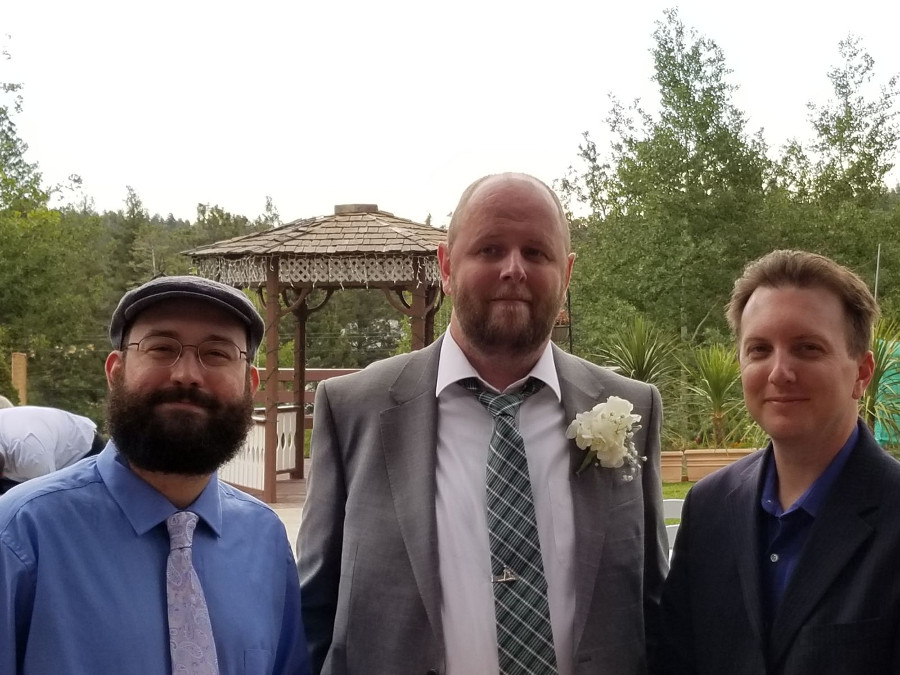James Gunn recently got fired from Guardians of the Galaxy 3 over some tasteless and offensive jokes he made on Twitter some years back.
That's not the subject of this post. You want to read someone's opinion about the James Gunn story, there are plenty of places to do that.
But it did get me thinking. You know who else has said some stupid shit on the Internet that's still up there where anybody can see it? Me.
I've had this blog since 1999. I was seventeen years old when I started it. Some of the content is even older -- KateStory started in 1994.
So, given that this website has a pretty steady stream of stuff I've written that stretches all the way back to when I was twelve? Yeah, let's just say I've had plenty of opportunities to say things that were really dumb. (At least unlike James Gunn, I have the "I was in my teens and twenties" excuse.)
I can think of specific examples, but I feel like pointing them out isn't going to help anybody. If I said something hurtful a long time ago, and I start talking about it again now, I feel like that's hurtful too, even if I'm doing it just to apologize.
So I won't. But you know the type of stuff. I used words I don't use anymore. I made jokes I don't make anymore. Transgression just for the sake of transgression -- say something offensive for a cheap laugh, then when somebody says "Hey, that's offensive," say it's their fault for being offended, and laugh at them.
So if you're going through this site, particularly through the really old stuff, and you find something that makes you say "Aw, come on, man" -- yeah, that's how I feel about it too, and I'm sorry.
Of course, all this raises another question: why keep it? Why keep all the old stuff, even the stuff that I'm embarrassed by or ashamed of? It's my blog, after all; I can delete anything I feel like.
I guess there are a few reasons.
I'm kind of a pack rat. I have trouble getting rid of stuff. I've still got my '90s Spider-Man and X-Men comics -- and I hate that stuff. It's just that actually going to the trouble of getting rid of it (seeing if any of it's worth anything, selling the stuff that is, donating the stuff that isn't) seems harder than just hanging on to it. And my blog doesn't take up nearly as much space as all those shortboxes.
I have a genuine affection for some of this stuff. The KateStory in particular. It's something my friends and I did together when we were kids. Sure, there's adolescent bickering, and dumbass "edgy" "humor", and there are plenty of places where it outright makes me cringe. But it's my friends and me, goofing around, saying whatever damn fool thing popped into our heads. To me, at least, the good outweighs the bad.
If I'm being honest... To a large extent, this blog shows me growing up -- transforming from a dumbass kid into a guy in his mid-30s who is hopefully at least a little bit less of a dumbass. If I cut out the stuff I said and did that was bad or wrong, I'd be cutting out the actual growing up part. And I feel like it would be a copout, like I'd be hiding my mistakes. I'd rather own them. I'm not proud of everything I've written, whether on this blog or elsewhere, but I acknowledge it. This, what I'm writing right now, represents who I am. The old stuff, the stuff I wrote ten or fifteen or twenty-four years ago, represents who I was then. I like to think there's some daylight between the man I am and the kid I was.
A lot of stuff is gone. Prodigy's gone. The Pyoko boards are gone. A lot of stuff I've posted online is gone. Honestly, in a lot of cases that's for the best. But I do sometimes wish I could go back and find something I wrote that isn't there anymore. This is as complete an archive of stuff I've written online as there is. I don't want to make it less complete.
It's not like that damn many people are reading this thing anyway. I mean, let's be honest. I'm not the director of Guardians of the Galaxy. I'm some guy who's been yammering on a blog for damn-near 20 years. If somebody is actually looking back through this blog at some dumb, offensive thing I wrote in my twenties, odds are pretty good that someone is me.


